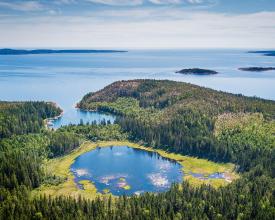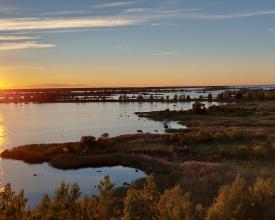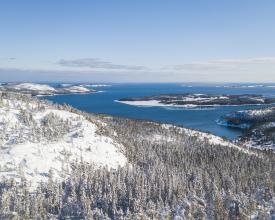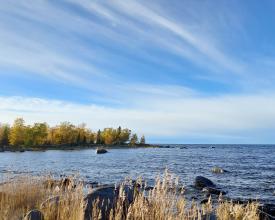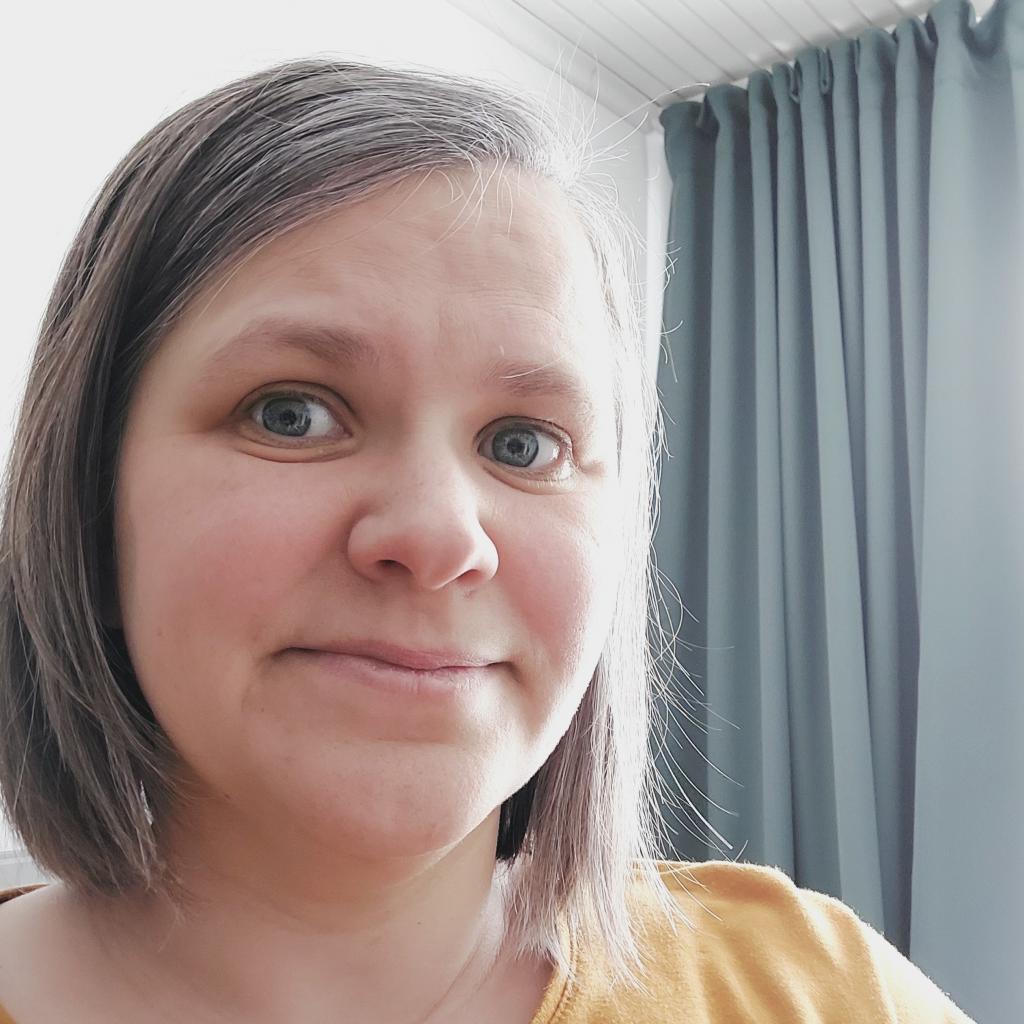
Developing long-term transnational cooperation and joint management in High Coast/Kvarken Archipelago World Heritage Site
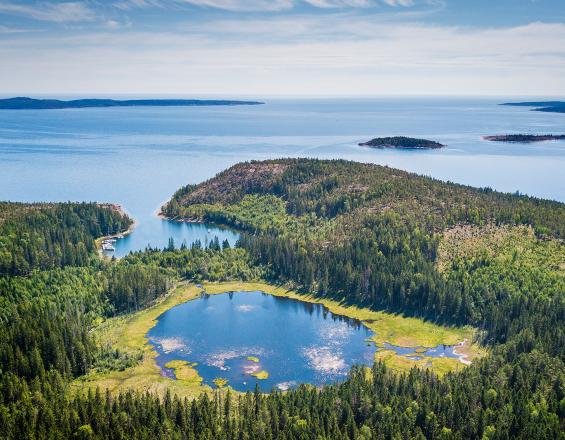
At the end of 2023 the first joint management plan for the transnational World Heritage Site of High Coast/Kvarken Archipelago was finalised. The plan ensures the safeguarding of World Heritage values of the place and sets a shared direction for the managing the World Heritage Site in both Finland and Sweden.
The management for the World Heritage Site is mainly done by the County Administrative Board of Västernorrland for the High Coast in Sweden. Metsähallitus Parks and Wildlife in Finland is responsible for the management of Kvarken Archipelago. Both organizations have their own site managers, who jointly authored the management plan.
The plan ensures that a good and effective management can continue even when key personnel is changed or moves on to different positions. A lot of work has been done to use the SOUV as a basis for the identification, classification and evaluation of attributes. The management plan has been prepared without additional external help and without project financing.
Context
Challenges addressed
There were several challenges that needed to be tackled to establish a joint management plan. The first one was that both High Coast and Kvarken Archipelago had outdated management plans. These plans were also very different in their scope as they were written by different authorities in different countries.
A brief note from the founding meeting (2008) of the transnational cooperation group, consisting of municipalities and regional authorities was the only written description of the structure of the transnational cooperation. There was the need to describe the roles of the many stakeholders involved at the site. The knowledge of the management system was mostly procedural knowledge tied to specific persons.
The connection between the SOUV and the most important World Heritage values and attributes had not been described. Some attribute listings had been made, but these were not categorized and not all parts of the SOUV were analysed to identify values and attributes.
Location
Process
Summary of the process
The management plan for the World Heritage site of High Coast / Kvarken Archipelago (Sweden and Finland) had been jointly prepared by the County Administrative Board of Västernorrland (Sweden) and the Metsähallitus Parks and Wildlife (Finland). This was possible by strengthening relationships through working together with a flexible mindset over time. The successful establishment of the management plan was based on a process of strengthening collaborations across the two organisations in a formalised manner based on consolidated and forward looking organisational cooperation. The base for the establishment of the management plan focused on the analysis of the Statement of Outstanding Universal Value (SOUV) of the site to identify the key values and attributes of the site. The joint management plan deepens the future cooperation. The plan describes roles and responsibilities of different actors, and also outlines joint structures for cooperation between managing authorities. This ensures a continuity in the transnational management of the High Coast/Kvarken Archipelago World Heritage Site.
Building Blocks
Climbing the ladder of cooperation
The High Coast (Sweden) became a World Heritage Site in 2000, and 2006 the World Heritage became a transnational site with the addition of the Kvarken Archipelago (Finland). Since the nomination process wasn’t done together, there was no clear cooperation structure in place. In 2008, a transnational cooperation group was formed with representatives from municipalities and authorities from the involved regions. Since the expansion of the World Heritage site to include Kvarken Archipelago, the cooperation between management authorities has progressively increased. The level of cooperation has varied a bit, mostly due to personnel changes. It takes time to build a team.
There has been several larger joint projects, financed by Interreg, an EU fund that promotes cross-border cooperation. The last one was LYSTRA from 2018-2020. In this project, Metsähallitus and the County Administrative Board started to work very close together. Now the cooperation between the site managers and other staff is an essential part of the work and a large contributing factor to the joint management plan. The project produced the first joint plan, which was an interpretation plan for the whole site.
Enabling factors
Sweden and Finland are very similar countries, which makes building cooperation easier. We found these following factors important:
- A mindset that cooperation is important, and something that is worth to use resources for in the organizations at large.
- A stable and predictable funding.
- Resources for projects, both in the own organization to be able to run large projects, but also an availability of appropriate project funds to apply for.
- Developing a consensus of what is important.
Lesson learned
- There were many lessons learned and knowledge that can be shared between organisations and there is a lot to learn from each other.
- It was important to build on the different strengths of each organization to increase efficiency.
- It is also important to involve the managers and directors in the cooperation, so that they also see the synergistic effects of collaborative planning. In our organizations the site managers are quite isolated and managing World Heritage is a small part of what our organizations do. So, with the strengthened cooperation, we have in fact created our own little team, albeit with the other team member in a different country.
- A final lesson that we have learnt is that it is important to be a bit flexible to make things work in both countries with different management systems.
Linking SOUV, World Heritage values and attributes
To be able to write a joint management plan, we need to agree on what we have to manage. A shared understanding of the key values and attributes is crucial. An important step for us was to facilitate meetings that brought the national geological surveys in both Sweden and Finland together so they could discuss land uplift and ice age traces and consider the site in its totality. These discussions gave important insight on the geological attributes of the site.
To get a clear overview of the key values of the property, excerpts from the SOUV for High Coast/Kvarken Archipelago were analysed and grouped together as seven key values. Attributes were listed for each key heritage value. This process gave a clear connection between the SOUV in the everyday work with WH management. It makes the abstract concept of World Heritage more tangibly associated to its management.
Enabling factors
The analysis of the SOUV required involving professionals from different disciplines and getting them to discuss about what makes the WHS special.
This step was first explored in the Climate Vulnerability Index (CVI) Assessment that was carried out at the site. The work done in the CVI project was crucial to linking SOUV, values and attributes together and it has been described in a separate PANORAMA solution (link below)
Lesson learned
- As a part of the CVI process we assessed the current condition and recent trend for the excerpts from our SOUV. This was done in a workshop with participants from both countries. The assessment helps in prioritization in WH management.
- In a transnational or serial WHS is it important to get specialists from different fields and different parts of the property to work together. We´ve learned that it is of great value to assess current condition and recent trend for WH values together with other stakeholders and specialists, as controversial results may raise many questions and perhaps skepticism. It is good to be able to show that the results are based on systematic work taking different views into consideration. And because of this broad base we know we can trust our results and conclusions.
- It was easy to list the most important attributes in the periodic reporting 2023, but that wouldn´t have been the case if the periodic reporting would have been prior to the work we´ve done with SOUV, values and attributes. A clear and structured overview of values and attributes, and a better understanding of our SOUV is also helpful in interpretation, communication, and monitoring.
- Accessible information is also beneficial for people working with planning and permits in the area.
Continuity in cooperation
- Our transnational cooperation was largely based on personal contacts and larger efforts were dependent on external funding. The work for the preparation of the joint management plan has allowed us to structure the transnational cooperation and formalize it. All these measures will contribute to a more sustainable and long-term cooperation that isn´t so dependent on personal connections.
- Now we have a better explanation of the tasks and organization of the transnational cooperation group, and we also included all municipalities in the area in the group.
- An expert panel will help in management questions considering protection of World Heritage values and give valuable input to both site managers and the transnational cooperation group.
- Personnel from different levels in the management authorities in both countries will meet regularly, and this is written into the management plan.
Enabling factors
The transnational cooperation group agreed to meet more frequently while working on the management plan. We had many discussions and workshops about the mission and constitution of the group, and we have also discussed the transnational management with organizations not directly involved in it. Transnational cooperation has to be important for the involved organizations and there has to be a will to invest in it.
Lesson learned
- This kind of work takes time. By building cooperation over time, it is possible to move on from learning from each other to solving challenges together.
- Cooperation can be very vulnerable if it is based on specific persons and personal connections, for example when persons in our cooperation group have changed and a new representative from the same organization did not have the chance to learn about the work from their predecessors. That´s why it is important to form routines for transferring knowledge within the involved organizations.
- Another challenge is to find the right level of representation, to get persons involved who have both knowledge and right to make decisions. When involving many different organizations, it isn´t always possible to reach consensus in different matters, but the strength of the cooperation is in the discussions and in asking questions.
- Another part of the success is that all work with the management plan (except the CVI project) was done as a part of our regular work. All things learned stays in the organizations when no short-time project staff have been participating. It took a long time, but it was worth it.
Impacts
The joint plan ensures a joint direction for the management in High Coast (Sweden) and Kvarken Archipelago (Finland). It was important to gather a work description of the many different tasks that a site manager has to do, and that at first glance maybe aren’t obvious. By having one management plan, the organisations involved can avoid some doubling work and efforts.
There was an important foundational work done before working on the plan. That was to thoroughly analyse the Statement of Outstanding Universal Value of the site and identify key values and important attributes. Having a clear and thorough structure and description of the links between SOUV, World Heritage values and important attributes is very important. In this process we gained a lot of insights of how to work with our OUV in a management context.
This has been an important learning process for the Cooperation group. The joint management plan will also be a foundation to further increase and deepen the cooperation between the County Administrative Board and Metsähallitus.
Beneficiaries
The managing authorities Metsähallitus for Kvarken Archipelago and the County Administrative Board for the High Coast. Municipalities and residents in the WHS. Other authorities and World Heritage Sites. The transnational cooperation group.

